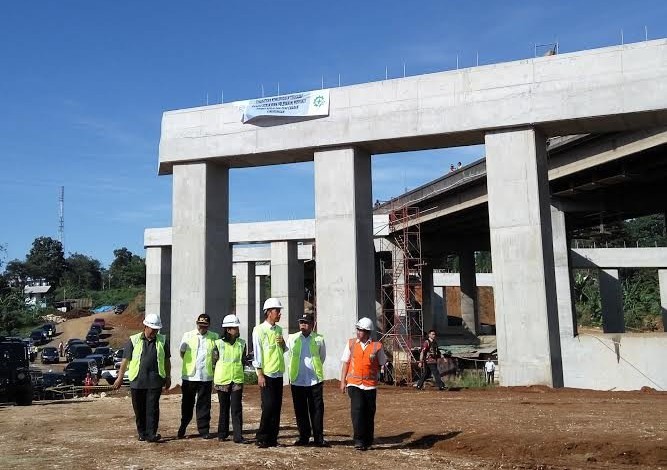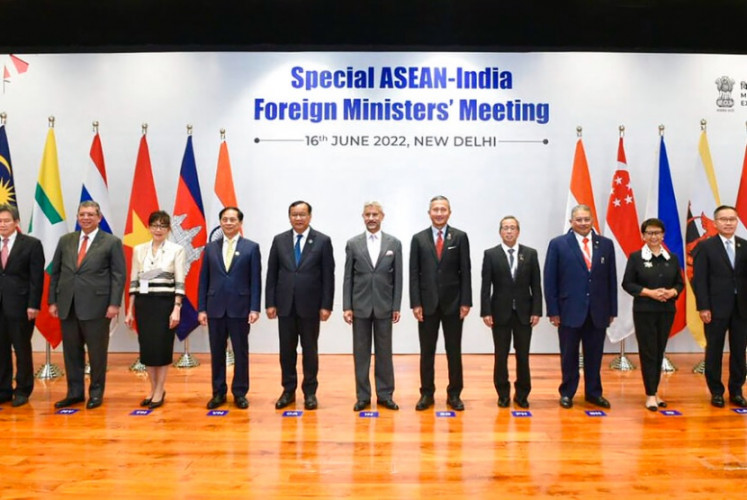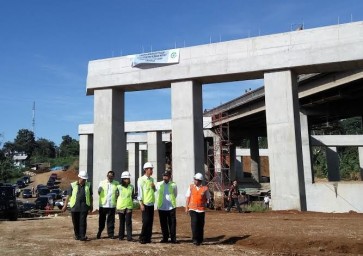ASEAN's golden age for infrastructure-backed growth
ASEAN marked its 50th anniversary with pledge to double infrastructure investments to more than US$700 billion in a five-year span.
Change Size
 Infrastructure race: President Joko “Jokowi” Widodo (third from right) inspects a section of a toll road construction project in Bogor, West Java, during a visit. (JP/Ayomi Amindoni)
Infrastructure race: President Joko “Jokowi” Widodo (third from right) inspects a section of a toll road construction project in Bogor, West Java, during a visit. (JP/Ayomi Amindoni)
T
he Association of Southeast Asian Nations (ASEAN) marked its 50th anniversary this week with its biggest economies pledging to double infrastructure investments to more than US$700 billion in a five-year span that could enhance trade, tourism and development to drive sustainable economic growth for decades to come.
Transportation initiatives are a key focus for budgeted spending in ASEAN’s 10 member economies out to 2020.
Such investments are vital given infrastructure’s crucial role in creating a long-term economic strength, according to the annual World Economic Forum Global Competitiveness Report. The emphasis on building better connections to facilitate trade and investment and the flow of goods and people in and around ASEAN cannot be under-estimated.
It will help domestic and international companies maximize the opportunities inside one of the world’s most populous, fastest-growing and vibrant regions — one, that with a combined gross domestic products (GDP) of about $2.8 trillion, already ranks as the world’s seventh largest and is on track to be in the top three by 2030.
Improving transport links in the ASEAN supply chain will bring down import costs — no small thing considering that 70 percent of global trade is now in intermediate goods and services and capital goods, according to World Bank estimates. No small thing either considering that ASEAN trade volumes are forecast to roughly double to $2.8 trillion by 2025 from 2014, fueled by the consumption anticipated from 57 million new middle class households set to be created in the coming decade.
The massive potential consumer spending power of this substantial, young and increasingly urban population is a key attraction for China under its Belt & Road Initiative (BRI) to upgrade the physical infrastructure, investment and business links that help drive trade.
ASEAN and China share a goal to double their bilateral trade to $1 trillion by 2020 from around $500 billion last year, which makes the business opportunities for infrastructure investment and the ecosystems that grow around major projects particularly compelling.
















